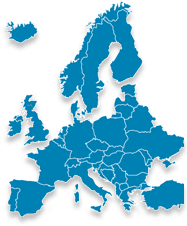
A.P. European History Culminating Project 2006
Project News
Additional Links:
Review this before conducting interviews.
Nearby library with much to offer the researcher.
Guide to citations.
great resource for modern European academics
Introduction to some resources around the city by the DePaul library. There are many more than these.
A decent catalog of primary source documents by Fordham University.
article from National Geo. on modern Russia
History of France through audio and visual materials.
PLEASE E-MAIL ME WITH ANY LINKS THAT MAY HELP CLASSMATES!
Rationale: History is made every day by people who often go nameless. When we discuss topics like massacres and migrations and the numbers add up, we tend to forget that each person had a specific reason for why they did something, a specific motivation personal to their experience. We remember martin Luther, but forget the converts who made the history happen. Each had their reasons. We remember Napoleon Boneparte, Jozef Stalin, and Adolf Hitler, but forget the people living in their crosshairs. These are important stories. History's meaning and its impact on the future can be found in the perspective of the individual people who become the collective rudders of the ship of time. (Poetic, eh?)
Why now?: This is meant as a summative project that will wrap up all your knowledge of European history and give you perspective on Europe's future. It is also meant to give you practice doing the work of a historian, since this is the top history class available. I hope to introduce your projects to a European audience this summer and perhaps to a European classroom of your peers.
Who does the work? You may work in groups made up of 2 or 3 or by yourself. Your grade will be based somewhat on the output per member. Be careful about who you pick as partners, although working with others is a good way to get the variety of work needed done in a good amount of time. Exchange e-mails and phone numbers.
Make a point! Look for controversy or disagreement. Find something not mentioned very often in the history books. Have something to say. Propose a theory or thesis and prove it. No historian in his/her right mind would put out a bunch of information without direction and something to offer the learning community. Simply collecting information is not making history. To make history you must analyze material and evaluate it, as well as collect it.
Citations Galore!: Cite every last thing you take in to reprocess from somewhere else. This includes written materia of all sorts, videos, audio, interviews (that you perform), etc. A true historian, like a scientist, explains their tracks so that others may give it a shot and arrive at the same or a similar place. This adds great strength to your argument.
Requirements:
• At least one interview with a European or former European. (This should be tape recorded and converted to digital audio or video so that accuracy is preserved. I will help you, if you do not know how to create *.mpeg files or *.mp3 files.) If done over e-mail or chat or if unable to provide a digital file an illustarted transcript is required in *.doc format.
• Some sort of self-guided field trip. There are ethnic cultural centers all over Chicagoland and experts in every field that can be talked to. Photos should document this trip. (This is a highly recommended optional idea.)
• Primary sources. Essential to any real history writing. These can be found in various libraries or even over the Internet in some cases. These range in anything from written word to actual artifacts.
• Secondary sources. Include well cited secondary sources when absolutely necessary to reflect historical context. Try to use primary sources as much as possible though.
The final project: You have two options that are
equally time consuming:
• Online museum: Your project will be presented in a website museum format so that I can publish it on my website www.splencner.com . We will submit our work to the general public and see if we get cited one day.
• Documentary Video: A video submitted digitally on file that is at least 15-20 minutes in length.